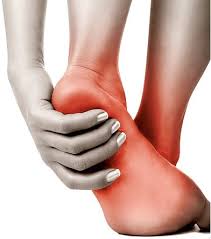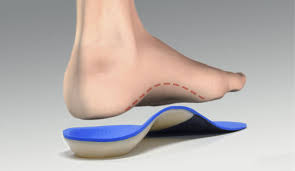Heel Pain from Standing All Day? Here’s What You Can Do
April 20 2025
If you spend most of your day on your feet, you know how exhausting — and painful — it can be. Heel pain is one of the most common complaints we hear from nurses, teachers, retail workers, hospitality staff, and many others who are constantly standing or walking. If you’re feeling that familiar ache at the end of the day, you’re not alone — and there are effective solutions to help you feel better.
At Naples Podiatrist, we’re here to help you understand why heel pain happens and what you can do to find lasting relief.
Why Does Standing Cause Heel Pain?
Your feet are built to support your body weight, but when you stand for long periods without enough support or rest, it puts continuous pressure on the heel — especially on the plantar fascia, a thick band of tissue that runs along the bottom of your foot. Over time, this pressure can lead to inflammation, irritation, and tiny tears, often resulting in plantar fasciitis — the most common cause of heel pain.
 Other possible causes include:
Other possible causes include:
– Heel spurs (bony growths on the heel bone)
– Achilles tendinitis
– Fat pad atrophy (thinning of the natural cushioning under the heel)
– Poor footwear choices that lack support or shock absorption
Signs You Shouldn’t Ignore
– Sharp, stabbing pain when you first step out of bed
– Aching or burning pain after prolonged standing or walking
– Swelling or tenderness around the heel
– Pain that worsens after activity rather than during it
If any of these symptoms sound familiar, it’s time to take action before the problem becomes more serious.
What You Can Do to Ease Heel Pain
1. Choose Supportive Footwear
 Shoes matter — a lot! Look for shoes with:
Shoes matter — a lot! Look for shoes with:
– Good arch support
– Cushioning in the heel area
– A slightly elevated heel (not completely flat)
– A firm, supportive sole
Avoid flip-flops, worn-out sneakers, or high heels for extended standing.
2. Stretch and Strengthen
Gentle stretching can make a big difference. Focus on:
– Calf stretches
– Plantar fascia stretches
– Toe curls and towel scrunches to strengthen foot muscles
These exercises help relieve tightness and improve the stability of your foot structures.
3. Take Breaks (Whenever Possible)
If your job requires constant standing, try to:
– Shift your weight from foot to foot
– Take short sitting breaks when you can
– Use a footrest or anti-fatigue mat to relieve pressure
4. Apply Ice
Icing your heel at the end of the day can help reduce inflammation and relieve pain. Apply an ice pack for 15–20 minutes at a time, a few times a day if needed.
5. Consider Custom Orthotics
Over-the-counter inserts can help, but if your pain persists, custom orthotics designed by a podiatrist offer personalized support and can address structural issues contributing to your pain.
6. Know When to See a Specialist
If your heel pain doesn’t improve with basic home care within two weeks, or if it’s severely affecting your ability to work or enjoy daily activities, it’s time to seek professional help. Early treatment can prevent chronic issues and get you back on your feet comfortably.
At Naples Podiatrist, we offer advanced treatments for heel pain, including MLS laser therapy, shockwave therapy, and custom orthotics — all tailored to your needs.
Ready to Walk Without Pain Again?
You don’t have to live with heel pain. Whether your discomfort is mild or severe, we’re here to help you find real relief and get back to living your life comfortably.
Call us today to schedule your consultation and take the first step toward happier, healthier feet!
📞 (239) 430-3668 (FOOT)
🌐 https://www.naplespodiatrist.com/

 Fax: (239) 692-9436
Fax: (239) 692-9436 Tel: 239-430-3668
Tel: 239-430-3668